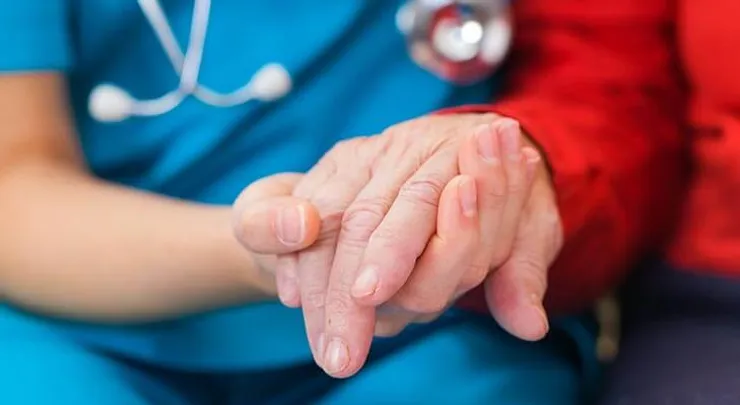What is Parkinson's Disease?
Parkinson's disease is a progressive nervous system disorder that affects movement.
Signs and symptoms can be different for everyone. Early signs may be mild and go unnoticed.

What are the Symptoms?
1.Tremors
-Uncontrolled shaking usually begins in a limb, often your hand or fingers.
2. Slow movement
-Slow movement, making simple tasks difficult and time-consuming
3. Loss of automatic movement
-Decreased ability to perform unconscious movements, including blinking,or swinging your arms.
4. Speech and writing changes
-Your speech may be more of a monotone rather than with the usual inflections and may experience difficulty in writing smoothly
5. Rigidity
-The stiff muscles can occur in any parts of your body and can be painful and limit your range of motion.
Progressive stages of Parkinson
Stage One: Changes in posture, walking and facial expressions occur
Stage Two: Tremor, rigidity and other movement affect both sides of the body
Stage Three: Common loss of balance, slowness of movements & falls
Stage Four: The person needs help with activities of daily living and is unable to live alone
Stage Five: The person requires a wheelchair or is bedridden.
Complications
Thinking difficulties - Usually happens in the later stages. One may experience difficulty in paying attention,concentrating, multitasking and problem solving.
Sleep problems and sleep disorders - A person may experience rapid eye movement sleep behavior disorder, which involves acting out your dreams and unusual sleeping patterns
Eating problems - You may develop difficulties with chewing and swallowing as your condition progresses in the later stage of Parkinson's disease which affects the muscles in your mouth, which could also lead to drooling.
Bladder and bowel problems - Inability and difficulty to control urine and some may even develop constipation, mainly due to a slower digestive tract.
Fatigue - Many people experience fatigue and loose energy, especially later in the day. The cause isn't always known.
What are the risk factors?
1. Age
- Parkinson's disease rarely occurs among young adults. As a person ages, chances of developing the disease is around age 60 or older.
2. Heredity
- The disease can be genetically related among close family members however, if there are many relatives living with Parkinson's, this would increase an individuals chance of having it too
3. Sex
- Women are less likely to develop this disease compared to men
Treatments
Even though Parkinson's disease can't be cured, medications can help to control the symptoms. In some later cases, surgery may be an option.
Lifestyle changes may be recommended by a doctor, such as aerobic exercise. Most cases, Physiotherapy is important in achieving the ability to carry out active daily activity.
Physiotherapy focuses on improving physical capacity and quality of movement in daily life through walking and transfer training, balance and falls education, and practice of manual activities (e.g. reaching and grasping). Other issues e.g. pain, well-being, respiratory function and support networks may need attention.
During the earlier stages, physiotherapists emphasize education and self-management encouraging use of leisure and third sector programme that promote general fitness and inclusion in community activity.
Physiotherapy-specific exercise can offset the effects of the disease to minimize deterioration in strength, endurance, flexibility and balance.
Physiotherapists can apply movement strategies to overcome difficulty in producing automatic movement and thought, including developing strategies to compensate for loss of function using cues. For example:
(External cues)
Auditory Cue

A supervisor/practitioner giving cues for example:
1...2...1...2 counts to train the walking rhythm of a patient
Tactile Cue

The hands are being used to improve sense of touch and fine motor skills
(Internal cues)
Mental rehearsal

Step by step re-learning of daily tasks such as eating, getting out of bed, going to the toilet and etc
Visualisation

Placing tapes on the floor for patients to improve walking steps. This is useful for patients for freezing gait.
Freezing gait is when a patient has minimal or reduced forward progression of the feet despite the intention to walk
A speech-language pathologist and occupational therapist can benefit a person who suffers from this disease as well.
Prevention
The cause of Parkinson's is unknown and it is not possible to prevent Parkinson’s disease but some lifelong habits may help to reduce the risk such as:
Turmeric: Contains curcumin, an antioxidant ingredient which helps to prevent the clumping of a protein involved in Parkinson’s disease
Flavonoids: May lower the risk of developing Parkinson’s disease. Flavonoids are present in berries, apples, some vegetables, tea, and red grapes.
Avoiding toxins: Exposure to herbicides, pesticides, and other toxins may increase the risk. People should take precautions when using these types of product.
Balanced diet: Studies have shown that consuming foods such as fresh vegetables,Omega-3 Fatty Acids,Vitamin D3,Green Tea may contribute to lowering your risk in developing Parkinson's Disease. However, bare in mind to consult your Doctor or Dietitian to ensure the right dosage/prescription of supplements that is suitable for you.

